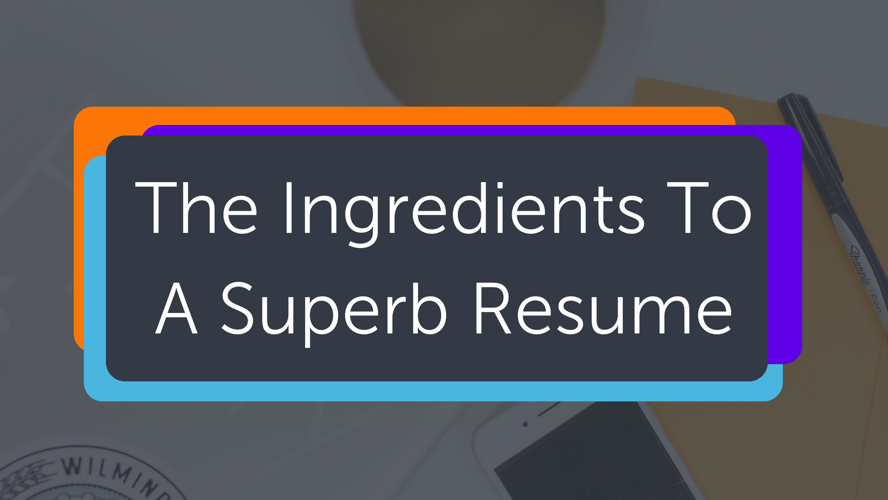
They say you never really have a firm grasp of something until you teach it to someone else.
For resumes, it works a little differently. I’ve found that you never have a full grasp on them until you’ve sifted through dozens during an interview and hiring process. What works fantastically and, more often, what fails abysmally, becomes crystal clear when you’re on the other side of the table.
As someone who’s been on both sides of that table, and who’s edited dozens of resumes, I’d like to offer some tricks of the trade as well as some cringeworthy pitfalls to avoid.
The Look And Feel Of It
I’m going to let you in on a little secret: How you format and present your resume will say a lot about how you plan to conduct yourself professionally. To that end, it’s an opportunity to communicate very much with very little to your prospective employer. Exploit that.
Convey a sense of effort and originality by not using a premade resume template. However tempting, it is both obvious and obnoxious.
Moderate that originality. A resume is many things, but an exercise in creative expression and artistic talent it is not. Let your credentials and how you express them do the distinguishing.
SEE ALSO: How We Quadrupled Our Qualified Applicant Pool By Firing Our Hiring Software
Keep it simple and legible. Times New Roman, Arial, Calibri, or Helvetica will do, as will size 11 or 12 font (If you’re lacking content, 12.5 or 13 is fine). Most people will tell you to stick with 1” margins, but here’s where I differ in opinion: Going down to 0.7” all around is acceptable if you need space, but only as a means of not spilling overboard to another page.
Be concise and convey some humility at the same time by curtailing your resume to an appropriate length. If possible, fit your resume to a single page. Showcasing that you are able to succinctly present your relevant accomplishments and skills will score you points. Remember: There’s still an interview to elaborate on all that stuff. 😉
The Heading
The simple fact that your resume is clean and refined is what will set your resume apart from the 30 others in the stack, I promise.
Center your full name with middle initial in 16 pt. font and bold it. Then, list these 4 details; no more, no less. Don’t take up much space with this. Below are two acceptable examples.
Content Sections
Resume creators far and wide debate on what sections to include and how to title them. Broadly, they fit under these four categories:
- Education
- Professional Experience
- Research
- Community Involvement and Volunteer Work
There are some subcategories that (usually) demand far less space and attention:
- Special Skills
- Honors and Awards
- Special Opportunities
- Coursework Highlights (if the resume is academically oriented)
SEE ALSO: Getting Things Done In A Distracting World
I recommend sticking closely to these categories and subcategories, and not overthinking them. They’ll serve you well. It is also important to note that, given the variability of people’s backgrounds, don’t stress if you have little or no content for one of these sections. We’re not all researchers or philanthropists. Some of us have highly specific skill-sets and tools we’ve acquired over our lifetimes, and others do not.
Relax. Employers understand this. This is by far the greatest point of anxiety for people creating resumes. It is also the most unnecessary one. You don’t have to be a master-of-all-trades to be hired; you do need to highlight what you bring to the table. That brings us to content.
The Meat Of It
A few things before we get before specific.
- Live and die by Reverse Chronological Order. I cannot stress this enough; most recent things first, people!
- Put line breaks between sections. In MS Word this is achieved by typing “---” (triple dash) and then hitting enter.
- Start each sentence that describes what you have done or are doing with action words. Edited, Monitored, Organized, Support, Develop, Coordinate, etc.
- Use bold lettering strategically, and sparingly. Keep in mind that with every bit of text you bold, everything you’ve already bolded becomes that much less emphasized.
Education
Once you’re enrolled in college, there’s no reason to put your high school on your resume any longer. Use this formatting as a guideline for this section:
[Institution Name] - [City, State Abbreviation]
[Specific school your degree falls under]
Pursuing/Awarded [degree name], [Expected or actual date of graduation]
GPA: [Number] out of possible [Number]
Here’s how I structure mine on my personal resume:

If you studied abroad or attended a summer program at another institution, putting them under this section is a judgment call. If you feel like they were relatively minor, consider putting them under “Special Opportunities” instead.
SEE ALSO: 3 Takeaways From My First Week At Hüify
Professional Experience
The format for your past and current work environments is cut and dry:
[Name of Organization], [City, State Abbreviation]
[Title of Position You Had], [Date you assumed position] - [Date you left position/Present]
When doing dates, there’s no need to include the day. Saying “July 2015” will suffice. For each position, you should have 2 or 3 bullet points below using to-the-point phrases that begin with an action word. Here’s an example:
- Edited confidential documents, white papers, and publications in addition to authoring two research papers.
Research
The research section will look quite similar to the professional experience section. It only differs in that you will want to use applicable action words (Identified, gathered, designed, developed, etc.), and be sure to include the results of whatever research project you undertook.
Community Involvement and Volunteer Work
Again, borrow relevant elements from the “Professional Experience” template above. One slight difference is that there is often not a position title associated with activities in this section. In that case, you may want to curtail your formatting to one line:
[Title of Position] at [Name of Organization], [City, State Abb.], [Start Date] - [End date/Present]
Subcategories
Unless you find that one of the subcategories is particularly relevant to describing yourself, leave them just that: subcategories. Keep entries concise, and consider using a · or | to separate them to demonstrate their relative unimportance from the other parts of your resume.
Spare Them
To cap it off, I’d like to list some things you should avoid when building a resume. Do not…
- Embellish your skills at MS Word. Listing it and leaving it at that is acceptable, but you should not mistake it for a point of pride in your resume. Reserve the “Special Skills” section to skills that are, indeed, special.
- Oversell your fluency in a foreign language. I cannot think of a resume item that could come back to haunt you more.
- Write “References available upon request” anywhere on the document. Extending this empty offer to your prospective employer will only give off the impression that it wasn’t on the table to begin with. If they need a testament to your capabilities, they will ask.
- Fail to proofread this document at least 5 times. Sleep on it, come back to it, then read it outloud to yourself or a friend. Then, scan it once more, and send it over to someone else for proofreading. Only then is it ready. Trust me on this. Spelling or grammatical errors in a resume is its fastest route to a trash can.
- List irrelevant, short-time stints or experience. Building a resume is partly a test of your selection skills. If you fail to leave out something that’s irrelevant, that is questionable at the very least.
- Steal language from the job description. While it’s nice to include keywords that the employer is looking for, copy and pasting exact descriptions is a terribly insincere idea.
- Use an objective statement. This one comes up quite frequently, and I’m pretty sure that academia loves harping about its indispensability. The truth is that it’s only relevant if you’re making a massive career change, and want to warrant why your resume might be a bit of a mismatch from what they might ordinarily expect.
- Send your resume as a word document. I’ve actually known employers to not consider resumes at all unless they’re in .pdf format. It takes about 45 seconds to convert the file.
Once you’ve cleansed your resume of all these pitfalls and edited it thoroughly, be sure to save a Master Copy of it in multiple places. Keep it up-to-date and on-hand, and you’ll save yourself loads of stress down the road.
If what’s on your (now perfect) resume indicates you’re an A-player salesperson or marketer, consider sending it our way. We’re always on the lookout for hungry, humble, motivated people to join our dynamic team.


 BACK TO ARTICLES
BACK TO ARTICLES 



